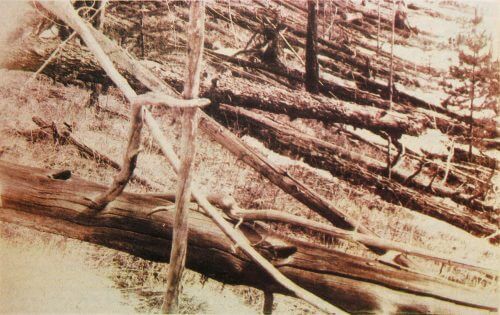According to a new study, the asteroid that exploded over Tunguska in Siberia on June 30, 1908 (Asteroid Day) was a fragment from Comet Encke which twice a year produces the Beta Taurid meteor shower observed in late June in the Northern Hemisphere and in November in the Southern Hemisphere. The study indicates that the shower may be hiding large asteroids inside 3-2 times the Tunguska asteroid and therefore have the potential to cause a lot of damage

According to a new study, the asteroid that exploded over Tunguska in Siberia on June 30, 1908 (Asteroid Day) was a fragment from Comet Encke which twice a year produces the Beta Taurid meteor shower observed in late June in the Northern Hemisphere and in November in the Southern Hemisphere. The study indicates that the shower may be hiding large asteroids inside 3-2 times that of the Tunguska asteroid and therefore have the potential to cause a lot of damage, this year we will receive an especially heavy barrage like in 1975, when higher than normal earthquake intensities were recorded on the moon by instruments left in the Apollo program
On June 30, 1908, vast areas of forest in a remote area of Russia suddenly collapsed when a relatively small meteorite, about 50 meters in diameter, released many megatons of energy over the rocky Tunguska River.
After an in-depth study of the orbit of the body hitting the atmosphere, the scientists came to the conclusion that it is related to the beta tauroid swarm and therefore to Comet Anka. This hypothesis was first put forward in 1978, among other things relying on the fact that this meter was at its peak at that time.
When looking at the map of objects that may crash on Earth there are two main sources. The first source is the Near Earth Objects (NEO) - mainly asteroids and meteorites. The second source these are comets that come from the outer solar system. During the last decades, a lot of effort has been invested in cataloging more than 90% of the objects that may endanger us and the work of locating the catalog and tracking large numbers of these objects continues. However, intruders from the external system are difficult to locate, but a lot of work is still being done in this area as well.
The Taurid Swarm is a third source of objects that alters the probability of potentially fatal collisions. The explosion that occurred in Tunguska (Russia) in 1908 is considered a one in 1000 year event, assuming a random distribution of events over time. But the tauridem swarm, a dense cluster within a meteoroid stream that periodically crosses the Earth and significantly changes the odds for once-in-a-century events. If the estimated intensity of the taurid swarm is indeed proven, this raises the possibility of a cluster of large Earth impacts over a short period of time.
In a study published on arXiv and accepted for publication in the Journal of the Royal Astronomical Society, David Clark from the Department of Earth Sciences of the University of Western Canada, Paul Wiegert and Peter Brown from the Department of Physics and Astronomy at the same university conducted a simulation with a large collection of rocks with a diameter of 100 meters - like the one that caused to the Tunguska event, which are in orbits similar to the tauroid swarm, and calculated their orbit a thousand years into the future. By analyzing the location of each object and its movement over time, the researchers calculated when and where to point the telescopes to investigate the overall risk potential of the tauroid swarm.
According to meteorite tracking data, the Earth will approach a distance of 30 million km from the center of the swarm, - the closest point since 1975. The calculations also show that this year is the best time to observe the tauroid swarm until the early XNUMXs.
"Since we shared our results at the recent Planetary Defense Conference in Washington, there has been a lot of interest in our findings," says David Clark, a graduate student at Western and lead author of the study. "There is evidence of potential existential risks but this summer we will have a unique opportunity to quantify the number of objects in the swarm."
Members of the group plan to observe the Taurid swarm using the French-Canadian telescope in Hawaii during the month of August.
Whether it is a meteorite, asteroid or comet, each of these hypotheses requires the existence of an impact crater, and despite eighty years of research, no such crater has been found. Also, reports of magnetic disturbances in the upper atmosphere from other regions of the world at the same time immediately after the Tunguska event, show the tremendous changes it caused in the Earth's magnetic field. Radar echoes from the bottom of a lake support the hypothesis that this lake was formed due to the Tunguska event. Cheko, a small lake in Siberia near the center of the 1908 Tunguska explosion event may fill a crater created by the space body that hit the Earth.
The 1908 Tungaska event was caused by a comet
Exactly one hundred years since the Tunguska event
Opinion/ Meteorite impact and extinction of dinosaurs - we should act to prevent man from a similar fate
